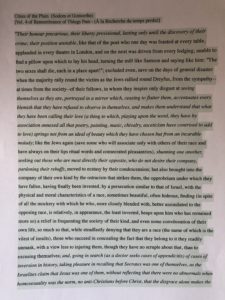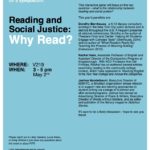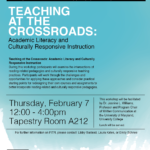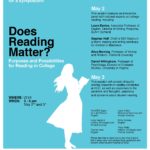Meeting 2: The Reading Brain
Readings:
We’ll be reading chapter 1 and chapter 2 of Maryanne Wolf’s book Proust and the Squid: The Story and Science of the Reading Brain and Daniel Willingham’s article “How to Get Your Mind to Read.”
Date: October 24
Time: 3:00-4:00
Location: V117
We grounded this meeting in chapters from Maryanne Wolf’s book Proust and the Squid: The Story and Science of the Reading Brain. According to Wolf, “[r]eading can be learned only because of the brain’s plastic design, and when reading takes place, that individual brain is forever changed” (5). In thinking about Wolf’s discussion on the evolution of the reading brain, we learn that humans do not have a natural ability to read, in the same way they are designed to see and speak. The ability to decode, recognize, associate, infer and analyze texts is a product of practicing and exercising reading processes incrementally, which eventually enhanced our reading ability.
Underlying the brain’s ability to learn reading lies in its protean capacity to make new connections among structures and circuits originally devoted to other more basic brain processes that have enjoyed a longer existence in human evolution, such as vision and spoken language. We now know that groups of neurons create new connections and pathways among themselves every time we acquire a new skill. (5).

To align with Wolf’s text, Gene McQuillan provided a short, but complex, sample Proust reading assignment, in which he scaffolds very carefully with his students. Gene showed us a two page long Proust excerpt he distributes to his students. He asks them to italicize lines, phrases, or sections they understand. The meta sample he shared showed a range of accessible content in which students felt comfortable italicizing. This segued into a discussion about how to get students to complete the readings we assign and how valuable this exercise might be in showing students how much they do in fact understand of seemingly complex text.
We know too well how frustrating and deflating it can be to walk into our classes excited and ready to work with a text we assigned, just to find out that a majority of the class hasn’t actually read the text, or even bought the book. In trying to understand our students, their resistance to reading, and their habits of mind, we brainstormed some possible solutions. It seems important to note that figuring out the best ways to integrate more readings into our courses can take some time/semesters before one finds the sweet spot. Also, worth remembering is that each class has its own sort of personality, so what works in one semester may not necessarily work in another.
Some ideas that come up in the group:
- assign accessible texts as primary or supplemental material (do not assume students will be able to engage with texts we (faculty/staff) find “easy”
- prepare your own reading packet and assign readings from your own customized reader
- teach students how to annotate, and model how one should read for and within a particular discipline
- regularly check to see that students have annotated the text (making this a part of your grading policy is helpful and can incentivize completing this process)






